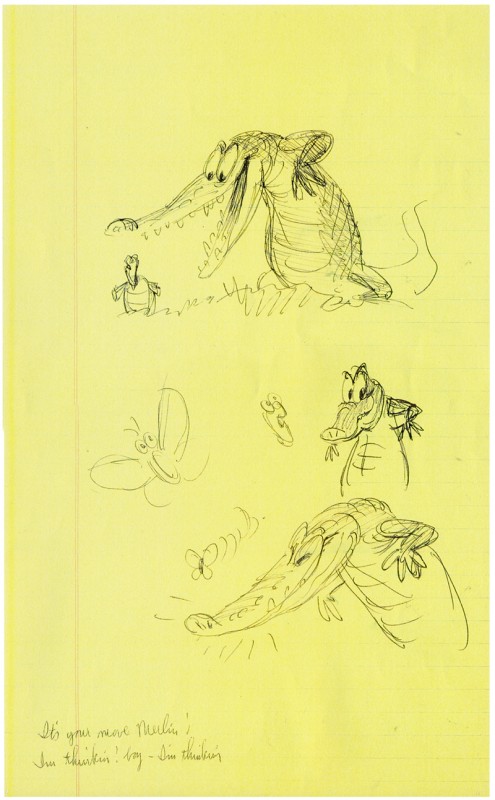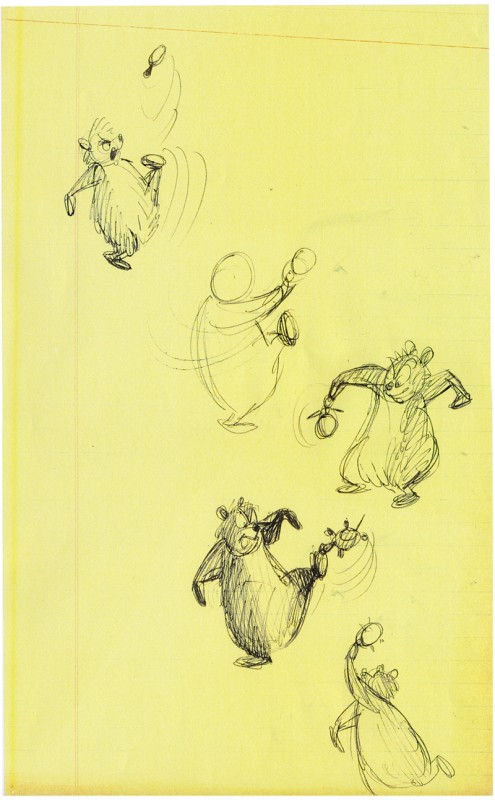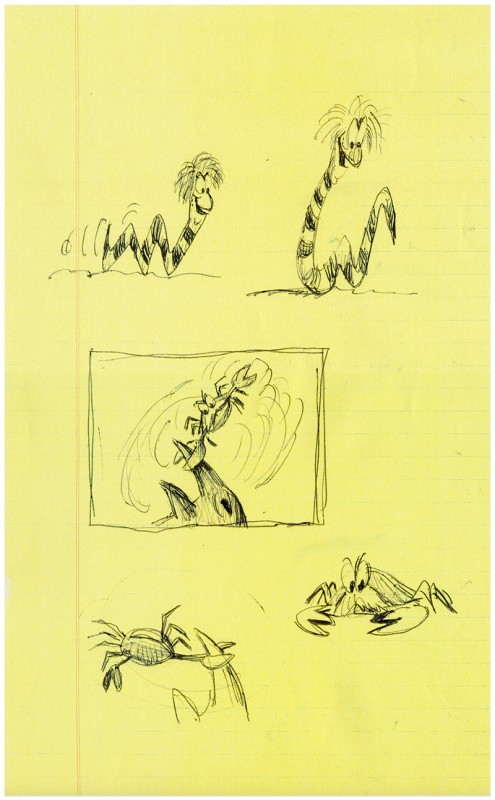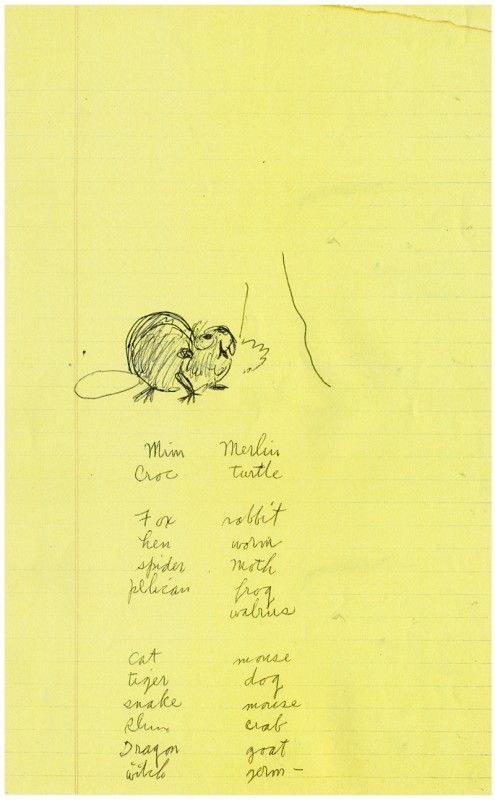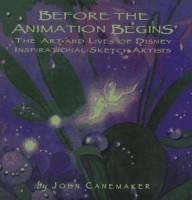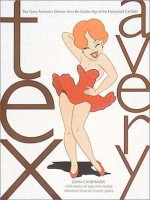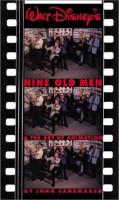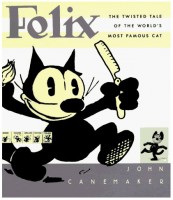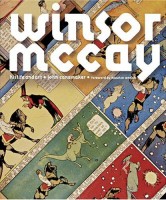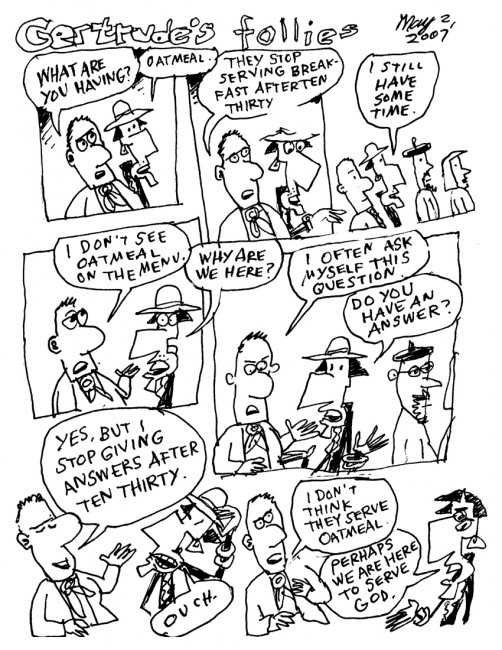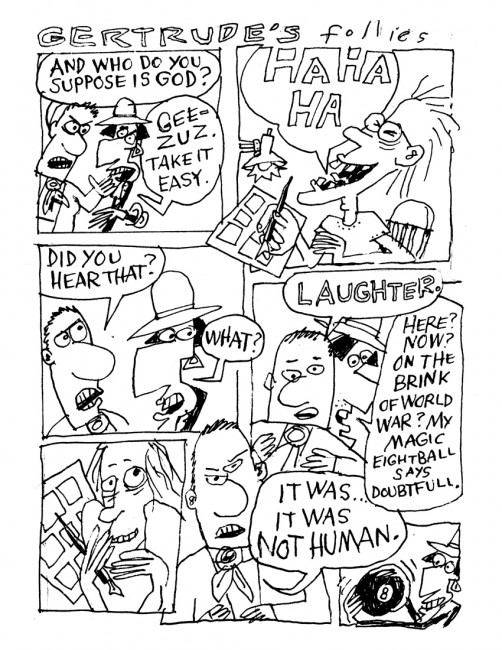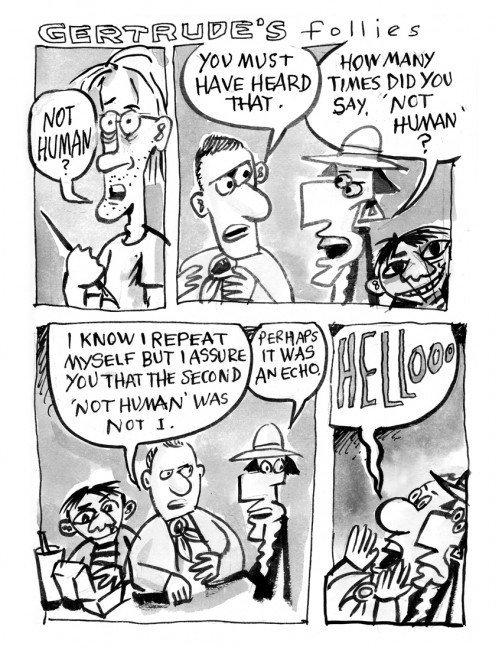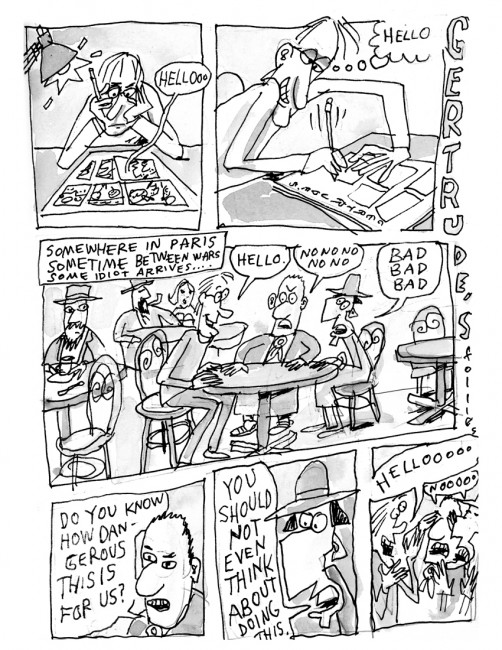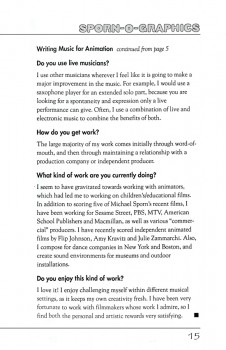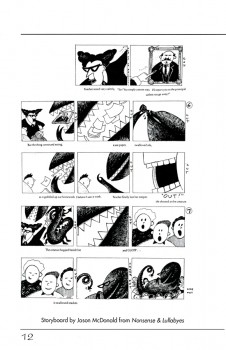Monthly ArchiveMay 2007
Animation Artifacts &Story & Storyboards 10 May 2007 08:46 am
Wizard Inspiration
- My intention was to post the bulk of the Bill Peet sketches for the Wizard’s Duel from Sword In The Stone. However, they take a while to scan and I’ll have to break them into two postings. So the first five pages come today (including the sketchbook cover with odd notes all over it.) Some of them have been in print before, but let’s keep them all together.
Thanks, again, to John Canemaker for the loan of this material. Peet’s a master animation storywriter, and those like me are thankful for any table scrapings we can get. John delivered a full meal.
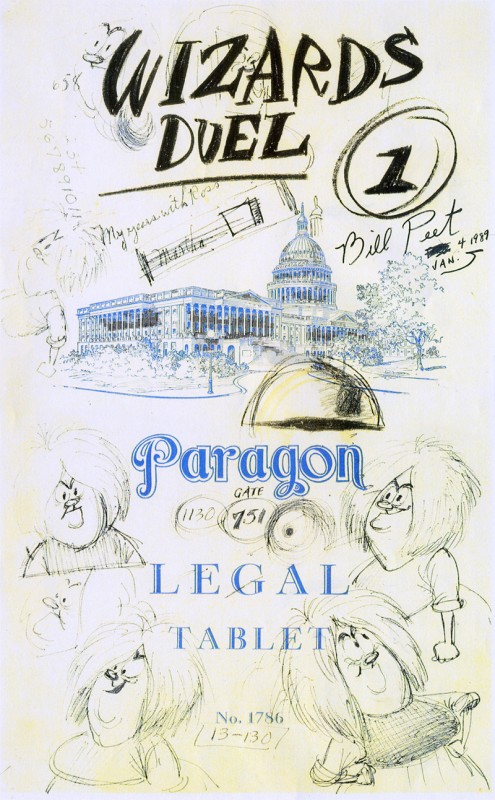
(Click on any image to enlarge.)
Animation Artifacts &Story & Storyboards 09 May 2007 08:08 am
Wizard’s Duel
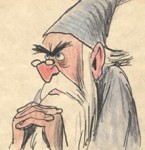 – John Canemaker dropped by yesterday with another little gem. Here is a preliminary storyboard done by Bill Peet of the Wizard’s Duel from Disney’s Sword In The Stone. The oddity of this board is that it’s dated April 1949. (The numbers at the bottom of the board clearly read “449.”) I didn’t have any clue that this film was in development that early. The book was published in 1938, so it’s quite feasible.
– John Canemaker dropped by yesterday with another little gem. Here is a preliminary storyboard done by Bill Peet of the Wizard’s Duel from Disney’s Sword In The Stone. The oddity of this board is that it’s dated April 1949. (The numbers at the bottom of the board clearly read “449.”) I didn’t have any clue that this film was in development that early. The book was published in 1938, so it’s quite feasible.
If that date is accurate, it’s amazing how close the characters stay to their final models. This could easily be explained with the heightened us of xerography in animation after 1958. Post 101 Dalmatians, this loose style was easy to translate into animation, and Ken Andersen was easily able to adapt to this style by Bill Peet that all of the animators in the studio loved.
 A
A
Click on any image to enlarge
 B
B
Note in row 2 how the spider turns into the tiger’s face; it’s a graphic turn. This never would have made it to the final in a Disney film, and it didn’t.
 C
C D
D
I love how extra drawings which have been pulled make it to the bottom of the second board.
Tomorrow, I’ll continue this post by putting up some rough drawings Peet did for this sequence as he developed it.
Animation &Music &SpornFilms 08 May 2007 07:32 am
Ernest Does DeSoto
- I think music is as important to animation as any of the drawing. (Even the lack of music, to me, is a musical choice in film.)
I’ve been very lucky to have worked with some incredibly fine composers in the films I’ve done. To that end I’ve come back to work again and again with the same few composers.
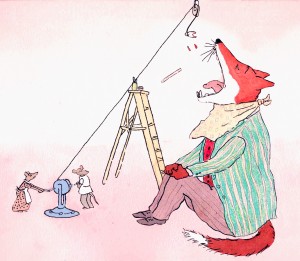 The first of those who seemed indispensible to the films we did together was Ernest Troost. We met way back on my first short film for Weston Woods. Ernest was on staff there, and we quickly became good friends.
The first of those who seemed indispensible to the films we did together was Ernest Troost. We met way back on my first short film for Weston Woods. Ernest was on staff there, and we quickly became good friends.
That first score he did for me was the delicate Rosemary Wells Morris’ Disappearing Bag. This quiet little film was successful, but it wasn’t until our second collaboration that things took off – Doctor DeSoto.
Doctor DeSoto was an Oscar nominee in 1984, and I think it was as much for the music as it was the William Steig story, or Ian Thompson’s droll reading, or any of our artwork. The film was a hit and won a lot of awards and, to this day, still gets a lot of exposure.
As we were about to go into this film, Ernest had to write a score for an slide version of the book which Weston Woods was going to distribute. I suggested he listen to Stephen Sondheim‘s score for the film, Stavisky. It was built around an infectious waltz and had a peculiar arrangement.
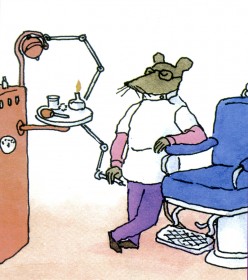 Ernest came up with something that took me by surprise. It was built off Stavisky but was so totally original in its sound that I had the first little shock that I’ve always gotten when music I didn’t expect but was excited and challenged with comes into my hands. This moment is always a great surprise and one of the pure delights, for me, of filmmaking. The only other experience it resembles is when an actor gives you a line reading that is totally unexpected, one you never would hear in your own head when reading the line. This is usually the best possible reading because it indicates pure character.
Ernest came up with something that took me by surprise. It was built off Stavisky but was so totally original in its sound that I had the first little shock that I’ve always gotten when music I didn’t expect but was excited and challenged with comes into my hands. This moment is always a great surprise and one of the pure delights, for me, of filmmaking. The only other experience it resembles is when an actor gives you a line reading that is totally unexpected, one you never would hear in your own head when reading the line. This is usually the best possible reading because it indicates pure character.
Ernest’s orchestral arrangements for this music reminded me of some small cartoon cabaret in Vienna in the early 1920′s. It worked perfectly for the cartoon Brooklyn in my mind for the film’s setting.
This is the pure character of a good composer scoring your piece.
Having the luxury of this original score prior ot the animation isn’t always a luxury an Independent filmmaker is given. It costs too much. But Weston had their score for the slide film, and I saw that this was going to be a great score for my animation. I worked with that waltz tempo.
When the fox was off screen, the camera moved in time with the waltz tempo and the limited animation also hit those beats. When the villain was onscreen, there was little to no camera movement cutting the picture to the tempos. Paul Gagne, editing, certainly helped out here.
The music not only was allowed to dominate the overall film, it was enhanced by this decision.
To hear the opening theme to Dr. DeSoto click here.
Ernest Troost also wrote about a dozen Sesame Street spots for me. Many of them were songs which he wrote with Maxine Fisher who did the lyrics. Two of these spots are featured on YouTube. I like the Crocodile Smiles spot which played at Annecy and is in the MOMA collection. Pirate Plan is a good song but my graphics don’t quite work.
Here’s another spot that is built around the music. For the very low budget, it was a big track for us, but Ernest pulled it off brilliantly. Obviously, he was parodying the John Williams’ scores for Indiana Jones.
Books &Trnka 07 May 2007 08:13 am
Animation Bio Books
 – Before talking about animation books, let me congratulate the winners at last night’s ASIFA East awards. Don Hertzfeld, Patrick Smith, Nina Paley, Bruce Knapp and all of the other winners should feel proud of their work. Three cheers also for ASIFA East President David Levy, who did another excellent job of moderating the proceedings. My only complaint is that it’d be nice to see the food you eat; the party is too dark. Better than last year , but more lights, please.
– Before talking about animation books, let me congratulate the winners at last night’s ASIFA East awards. Don Hertzfeld, Patrick Smith, Nina Paley, Bruce Knapp and all of the other winners should feel proud of their work. Three cheers also for ASIFA East President David Levy, who did another excellent job of moderating the proceedings. My only complaint is that it’d be nice to see the food you eat; the party is too dark. Better than last year , but more lights, please.
The ASIFA East website will have a complete list of winners today.
- Continuing my thoughts on all the animation books out there (boy, there are a lot of them!), I thought I’d look at a couple of biographies. On April 16th, Amid Amidi posted on Cartoon Brew a listing of animation autobiographies he compiled on Amazon. Some of these are gems, some aren’t.
Not focusing on autobiographical books but rather on biographical ones, I’ve opened the door a tad to show some books that I’ve enjoyed and a couple I’ve loved.
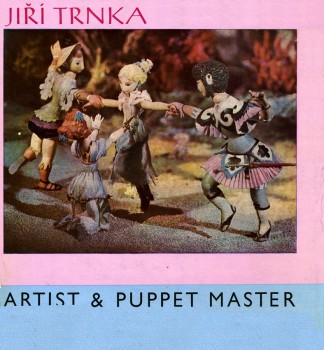 Let’s start with one of my favorite books. It’s no secret that I not only love puppets, but love animated puppet films. Far and above all the others, I find Jiri Trnka among the finest masters in animation and animation history. He took the animation puppet form and pushed it to new heights.
Let’s start with one of my favorite books. It’s no secret that I not only love puppets, but love animated puppet films. Far and above all the others, I find Jiri Trnka among the finest masters in animation and animation history. He took the animation puppet form and pushed it to new heights.
There are several books on Trnka’s work. I have three books and two folio publications on this artist. Jiri Trnka, Artist and Puppet Master by Jarolslav Bocek is an excellent book that was initally published in 1963 and in English in 1965. Because of the early date, several of his most important films aren’t included; specifically The Hand and The Archangel Gabriel and Mother Goose. Both were enormous films that had an enormous effect on animation puppet filmmaking.
However, this book focuses on his feature, Midsummer’s Night Dream (pictured on the book’s cover) and includes many excellent images from that film. In fact, there are quite a few illustrations in the book from many of Trnka’s films and illustrations. The book’s text is spare but quite effective in illustrating many of the important points in the life and work of this artist. It’s the illustrations that make this book a gem.
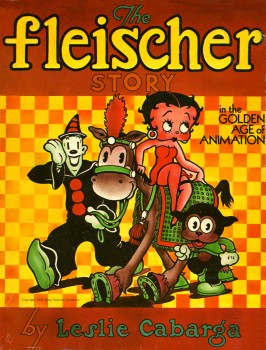 Another book that is made by its illustrations is Leslie Carbaga‘s book, The Fleischer Story. It’s an odd scrapbook of a biography of the Fleischers. Originally published in 1976 this book revealed a lot of information about the New York studio. It took them through the silent days right into the Florida studio and gets a bit odd about the final days of the studio.
Another book that is made by its illustrations is Leslie Carbaga‘s book, The Fleischer Story. It’s an odd scrapbook of a biography of the Fleischers. Originally published in 1976 this book revealed a lot of information about the New York studio. It took them through the silent days right into the Florida studio and gets a bit odd about the final days of the studio.
There is a large grab bag of black and white illustrations which show off a lot of the behind-the-scenes material the studio created in making their shorts. Model sheets, animation drawings, patent sketches, copies of the Fleischer Studio News in-house organ, and hi contrast photos are all pasted together in an unusual arrangement.
It really does feel a bit like a scrapbook of the studio, and it all serves to give you a lot of original material in the pre-internet days. Oddly, I can easily imagine this book as a website.
The original book didn’t quite deal with the whys and hows of the breakup, but by mailing to Carbaga he sent an amended letter to the chapter revealing information that he couldn’t tell until Dave Fleischer died. I’m not sure if the more recent copies of the book have been adjusted to include this gossipy information.
The Walter Lantz Story by Joe Adamson is an interesting little book not least because of 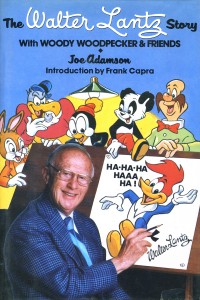 the odd introduction by Frank Capra. The book, like Lantz’ films, has a relaxed way of telling its story. In an almost casual manner, Adamson reveals the history of this animation pioneer.
the odd introduction by Frank Capra. The book, like Lantz’ films, has a relaxed way of telling its story. In an almost casual manner, Adamson reveals the history of this animation pioneer.
When I originally read it, I was surprised by the hard-core nuts and bolts that were revealed about the finances of the Lantz films. It was particularly interesting to me as an independent producer of animation. Somehow realizing that another of the established animation producers had suffered through difficult financial problems seemed somehow soothing. It’s a difficult game, and it’s always comforting to hear of others’ problems. In some way, they feel shared. I read this book as I went through a difficult patch, and it felt like every chapter of the book ended with more financial problems the Lantz studio was pushing through in their history.
Of course, a lot of important names are dropped in the Lantz history. Bill Nolan, Shamus Culhane, Tex Avery, Dick Lundy and LaVerne Harding all play an important part of the history. The book was obviously authorized by Walter and Gracie Lantz and almost feels as if they stood over Adamson’s shoulder as he wrote it.
It was also interesting back in 1985 to clear up some of the difficulties that spread through animation studios as one studio robbed from another both characters and personnel. I enjoyed seeing it sorted out, and this was one of the first to help clear the air of the Oswald the Rabbit theft and how the different bodies landed in the different studios. Today, of course, a reading of Michael Barrier‘s Hollywood Cartoons makes the history evident and clear. Except for some of the nitty gritty financial details and meticulous information about the Lantz studio, this book is almost superfluous now. In some ways it’s similar to the autobiographical tome by Bill Hanna. Just the same I not only enjoyed it but felt a strong connection to it.
- Of course, if you’re talking about animation biographies, you can’t omit the mass of titles of books by John Canemaker. Here are just a few that impress:
Before the Animation Begins: The Art and Lives of Disney Inspirational Sketch Artists This is one of my favorites of John’s books. Obviously, my heart is in design and his focus is on some key designers throughout the history of Disney animation. I just wish there were a sequel to this so that some more names could be revealed and analyzed.
Tex Avery: The Mgm Years, 1942-1955 There’s a wonderful French volume by Patrick Brion with the same title Tex Avery that is just beautifully produced with animation art on vellum and printed in color to highlight color pencil. Canemaker’s book isn’t quite up to this, but it’s wonderful on its own right giving complete attention to the MGM years of Avery’s work. The difference between the two copies I own, is that Canemaker’s book is in English, and I can understand it.
Walt Disney’s Nine Old Men and the Art of Animation gives the biographies of all nine animators Disney called his “Nine Old Men.” It’s amazing how much attention and photographic detail it gives to nine markedly dissimilar individuals.
Felix: The Twisted Tale of the World’s Most Famous Cat is by far the only real biography of the cat. In fact, it’s really more a biography of Otto Messmer, the quiet artist who drew most of the silent shorts for Pat Sullivan.
Winsor McCay : His Life and Art is the crème de la crème of Canemaker’s work. This book unveils all the material in this pantheon of cartoon creators. It’s an absolute must for all animation and comic strip lovers.
Comic Art &T.Hachtman 06 May 2007 08:11 am
Gertrude, Meet God
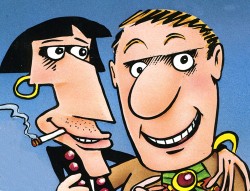 – After posting some of the Gertrude Follies strips and storyboard sections from our old feature board, I’d decided to go ahead and make a short short out of one of the funnier strips. So we’ve had that in production for the last couple of weeks.
– After posting some of the Gertrude Follies strips and storyboard sections from our old feature board, I’d decided to go ahead and make a short short out of one of the funnier strips. So we’ve had that in production for the last couple of weeks.
Knowing I needed more writing, I asked Tom Hachtman, the strip’s creator, to get involved, and he’s been sending new material to us. Most of it seems to have gone off on a tangent – a funny one, so I thought I’d post a couple of these new pieces.
(Obviously, with his permission.)
It starts with Gertrude, Alice and Pabs in a restaurant about to order some fast food.
A.O. Scott has an article in today’s NYTimes which talks about retrofitting movies from old television shows. Specifically, he talks about Underdog, but then talks about animated features such as The Simpsons and other cgi product. It’s a good read.
Commentary &Puppet Animation 05 May 2007 08:06 am
More Marionettes
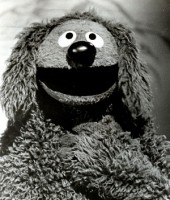 - Jim Henson actually changed puppetry and the perception of puppets with personality, imagination and great craftsmanship. His hand/rod puppets were so believable that almost any other form of puppet was rejected. When he first started appearing regularly on ABC’s Jimmy Dean Show, where Rowlf the Dog became an overnight sensation, puppetry took a giant step. Once his puppets were filmed and were just as successful on the big screen as they’d been on TV, they became something bigger than puppets. Since they were originally planned for television the move to film was relatively easy, and the Muppets took the world. No wonder the show was an immediate success.
- Jim Henson actually changed puppetry and the perception of puppets with personality, imagination and great craftsmanship. His hand/rod puppets were so believable that almost any other form of puppet was rejected. When he first started appearing regularly on ABC’s Jimmy Dean Show, where Rowlf the Dog became an overnight sensation, puppetry took a giant step. Once his puppets were filmed and were just as successful on the big screen as they’d been on TV, they became something bigger than puppets. Since they were originally planned for television the move to film was relatively easy, and the Muppets took the world. No wonder the show was an immediate success.
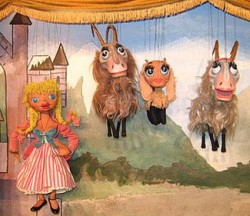 This was bad news for marionettes.
This was bad news for marionettes.
Once Bil & Cora Baird had ruled the theatrical environs on TV (Bil & Cora Baird Show and Peter & the Wolf) , in theater (Flahooley, Baker Street) and on film (Sound of Music). Yet when the very successful scene in the film, Lili, where Leslie Caron talks to Bil Baird’s marionette, moved to Broadway as the musical, Carnival, it was Jim Henson who built the puppets for the show.
A sea change had happened. The marionette had become a hand puppet.
Here’s a bit of the Bil & Cora Baird tv show:
It’s interesting that both Henson and the Bairds dabbled with stop motion animation. this is a Sesame Street piece from Henson:
Perhaps it took too long, or maybe the element of live theater was lost, but neither went beyond small attempts in the form. Stop motion wasn’t for them.
Bil & Cora Baird opened their puppet theater on 50 Barrow Street in Greenwich Village and it lived to the end of their lives. But the fame that they knew was eclipsed by the Henson success. Times change and marionettes – puppets on strings – seemed to become little more than a joke. (See Team America. The duo that attacked animation went after puppet films like Thunderbirds Are Go and Stingray.)
Now it appears that puppets on film are getting eclipsed by computer animation. When all cgi filmmakers are using their medium to create little doll-like characters straight out of Viewmaster, can a hand/rod puppet succeed? When Yoda goes from a Henson puppet to a cgi puppet, is the handwriting on the wall?
Perhaps only live theater will keep the brilliance of live puppets (including marionettes) alive. The performance of a marionette Macbeth, that I saw recently, played to a full house. Most of the audience, it seemed to me, were adults.
Time to get back to the marionette theater that has existed in Central Park for so long.
Commentary 04 May 2007 08:01 am
Brando-style Acting Animated
(Note: I wrote this piece based on Mark Mayerson’s initial comments about acting, and I’m responding to what I read there. He has expounded on those thoughts, and I should react. But I think I’ll let this post sit as it is.)
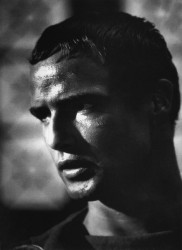 – Mark Mayerson, on his blog, offered enormous and deserved praise for Marlon Brando‘s acting. He then compared it to animation suggesting that no animator has touched the surface of Brando’s work (my phrasing – not Mark’s). This commentary had me mulling about anima-tion and animation acting for the next day or so, and I thought I should comment.
– Mark Mayerson, on his blog, offered enormous and deserved praise for Marlon Brando‘s acting. He then compared it to animation suggesting that no animator has touched the surface of Brando’s work (my phrasing – not Mark’s). This commentary had me mulling about anima-tion and animation acting for the next day or so, and I thought I should comment.
Since I’m prone to ramble, I decided not to overwork Mark’s site with my words and to post it here. Consequently, I think that you might want to read Mark’s not-very-long commentary if you want to continue; go here.
To start with, Mark ends his piece by suggesting that Gollum, the character, is probably the closest that animation has to Brando. This I have to push away from my table with one big stroke.
I don’t understand how a character could be the equivalent of Brando. Even if I thought Gollum were well animated (and I don’t even consider it animation – the way I consider Tytla’s work animation), I would have to compare it to one of Brando’s characters – Stanley, in Streetcar, perhaps.
Perhaps I misunderstand Mark’s thought here.
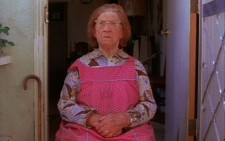 Years ago I was exiting the premiere of Errol Morris‘ first documentary feature, Gates of Heaven. I was shaken, disturbed and said so to my companion. The documentary was an anti-New Wave film. Yet, animation hadn’t even had its own New Wave! (And still hasn’t!) What hope was there for my chosen field?
Years ago I was exiting the premiere of Errol Morris‘ first documentary feature, Gates of Heaven. I was shaken, disturbed and said so to my companion. The documentary was an anti-New Wave film. Yet, animation hadn’t even had its own New Wave! (And still hasn’t!) What hope was there for my chosen field?
Intelligently, my companion reminded me of Yurij Norstein‘s masterpiece, Tale of Tales. I knew she was right; Norstein had pushed animation up to the equal of live action. The future was as much in my hands as documentaries were in Errol Morris‘ hands.
How many times since then have I reminded myself of Tale of Tales?
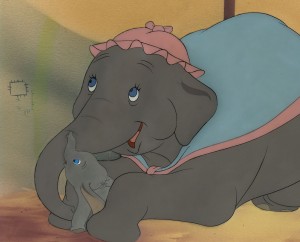 I do think there are animators who were the equivalent of Brando.
I do think there are animators who were the equivalent of Brando.
Tytla was certainly one. I think Tissa David‘s work is on a par with Brando (though I usually think of her closer to Meryl Streep – to me every bit the equal to Brando. (The divine moment in the mediocre film, Devil Wears Prada, where Streep sits in a bathrobe, with bare feet, allowing her vulnerability to escape, before hardening again, has to have been the finest acted moment in film last year.)
The fact that a handful of animators with the knowledge of their craft and the ability to use it didn’t get the work or the part is, to me, irrelevant. If Brando had only played the equivalent of Superman’s father for his entire career, we wouldn’t be talking about him. But he did play that role as well as other mediocre parts, and he played them all extremely well. He also played many masterful roles throughout his career. He gave actors a point in the sky to which they could stretch.
Tytla – there can be no doubt – was in the stratosphere. He is the one we all point to. Stromboli in Pinocchio, Chernobog in Fantasia, Dumbo under his mother’s legs, the dwarfs in Snow White. Can there be any greater acting? The fact that he was forced out of Disney’s studio to the lacking resources of Terrytoons had to affect everything he did. There was no possibility of his continuing the brilliant work. He was subjected to be Superman’s father for the rest of his career.
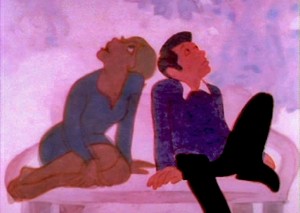 Tissa David is an animator who has made a career of the little human touches among those brilliantly drawn characters of hers. She has worked always on a very tight budget with high footage rates. She has had projects the equivalent of some of those Tytla Disney films, but she was always forced to the ground with their Independent budgets. She has had a couple of large budget projects that had poor stories and/or characters that she had to develop. The fact that she has not always had the great budgets to support her great characters has not hurt her work. She is still a great actress, and her characters – even on three’s – live. Unfortunately, most of her work has been done in the regional theater of animation where the audiences aren’t massive. However, she has made gold of what was handed her, and her talent and abilities are every bit the equal of Brando – and Streep.
Tissa David is an animator who has made a career of the little human touches among those brilliantly drawn characters of hers. She has worked always on a very tight budget with high footage rates. She has had projects the equivalent of some of those Tytla Disney films, but she was always forced to the ground with their Independent budgets. She has had a couple of large budget projects that had poor stories and/or characters that she had to develop. The fact that she has not always had the great budgets to support her great characters has not hurt her work. She is still a great actress, and her characters – even on three’s – live. Unfortunately, most of her work has been done in the regional theater of animation where the audiences aren’t massive. However, she has made gold of what was handed her, and her talent and abilities are every bit the equal of Brando – and Streep.
And there is Tale of Tales. Norstein has done it many times from that truly adult film, to Hedgehog in the Fog or The Heron and The Crane. The direction is brilliant, the filmmaking superb, and the acting equal to the greatest. The unfortunate part is that he has done so little work since the fall of the USSR. (Check out the beautiful and recent Winter Days.)
Brando’s acting style came out of the Actors’ Studio which was an outgrowth of the Group Theater which grew out of Stanislavsky. I always like to think back on a comment John Hubley told me. He said that a small number of those at the Disney were ardent advocates of Stanislavsky, but the rest of the studio couldn’t spell it. Tytla was definitely one of the advocates; just take a look at Chernobog and try to argue otherwise. Tissa came out of France at just the time that the French New Wave started to spark. She went to work under the wing of Grim Natwick who was also one of the Stanislavsky devotees.
Mark is right that there are very few people who could be tagged with such greatness. Most of those I can think of are dead or are no longer working.
These days acting techniques and stylization has grown so enormously sophisticated. Animation abilities have gone in the opposite direction. Today, in animation, it’s all about the broad gesture. I don’t think there is anyone among the young stretching – or trying to stretch – to the same heights, and I’m not sure there will be any more. Though I can hope
- By the way, you should already know that Mark Mayerson has been posting enormously 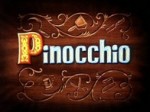 valuable information with his breakdowns and analysis of Pinocchio, scene for scene.
valuable information with his breakdowns and analysis of Pinocchio, scene for scene.
It would be wonderful if somehow Mark got this bound in a published volume. He’s just posted the seventh part of his notes on the “Mosaics” he’s been doing of this monumental film. If you have any interest in animation, you should be following these posts.
Daily post &Festivals 03 May 2007 08:02 am
ASIFA & MOMA
On Sunday ASIFA East
The annual ASIFA-East Festival awards and party will take place at the New School.
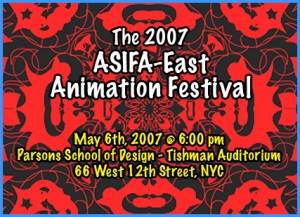 A lot of filmmakers will be awarded prizes and their films will be shown starting (dare I say) punctually at 6PM.
A lot of filmmakers will be awarded prizes and their films will be shown starting (dare I say) punctually at 6PM.
It’s the annual program of the best 2007 animated films (commercials, sponsored, student and independent films) as judged by our democratic list of judges (all the members who wanted to vote.)
Following the films and awards ceremony there will be the usual party (wine and cheese) and big schmooze. As always, it promises to be fun.
(Tape The Sopranos, and come.)
It’s FREE as usual.
Sunday, May 6th, 6 pm
The New School, Tishman Auditorium
66 West 12th street
On Monday at MOMA
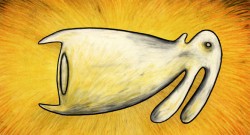 - An Evening with Andreas Hykade (Germany) and Mariusz Wilczynski (Poland) will be celebrated at the Museum of Modern Art on Monday, May 7th at 8PM.
- An Evening with Andreas Hykade (Germany) and Mariusz Wilczynski (Poland) will be celebrated at the Museum of Modern Art on Monday, May 7th at 8PM.
For this special program Andreas Hykade introduces his trilogy of “country films,” which have won top prizes at the prestigious Hiroshima and Ottawa animation festivals: the mythic We Lived in Grass (1995), the raunchy, honky-tonk Ring of Fire (2000), and the trilogy’s disturbing coda, The Runt (2006).
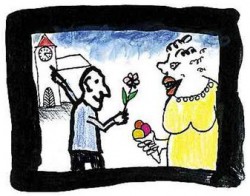 Mariusz Wilczynski presents a range of work from the Chaplinesque Times Have Passed (1998) to Unfortunately (2004), a twilight journey set to a haunting score by Polish jazz trumpeter Tomasz Stanko. The artist describes his newest work, Kizi Mizi (2007), as “a tough love story between a cat and a mouse…a film about loneliness, betrayal, and revenge.”
Mariusz Wilczynski presents a range of work from the Chaplinesque Times Have Passed (1998) to Unfortunately (2004), a twilight journey set to a haunting score by Polish jazz trumpeter Tomasz Stanko. The artist describes his newest work, Kizi Mizi (2007), as “a tough love story between a cat and a mouse…a film about loneliness, betrayal, and revenge.”
The program is presented in conjunction with Goethe-Institut New York and the Polish Cultural Institute.
Daily post &Festivals 02 May 2007 06:58 am
Tribeca Film Fest & BE Film
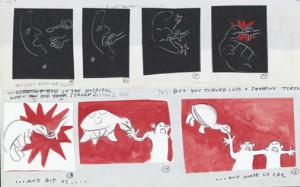 – Monday night was the first screening at the Tribeca Film Festival of a program honoring John Canemaker‘s Independent films. There will be two more screenings with tickets still available.
– Monday night was the first screening at the Tribeca Film Festival of a program honoring John Canemaker‘s Independent films. There will be two more screenings with tickets still available.
Per the Program Notes:
-
Continuing Tribeca’s celebration of New York-based independent animators, this program features the work of John Canemaker, a preeminent animation teacher, filmmaker, author and historian, who won an Oscar® for his animated short The Moon and the Son in 2006.
A selection of short films spanning Canemaker’s career will be shown including Confessions of a Stardreamer, Bridgehampton, The Wizard’s Son, Otto Messmer and Felix the Cat, The Moon and the Son: An Imagined Conversation, and Bottom’s Dream.
The program will be shown again on the following dates:
Thursday, May 3, 11:59 pm
Tribeca Cinemas – Theater 2
54 Varick Street (Below Canal Street, at Laight Street)
Sunday, May 6, 10:30 am
AMC Kips Bay Theater 14
570 Second Avenue (at 32nd St.)
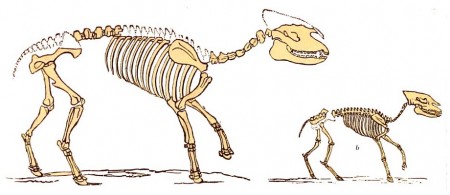
 Trying to be the Alternative Tribeca Film Festival is
Trying to be the Alternative Tribeca Film Festival is
the BE Film Festival (formerly known as the Tribeca Underground Film Festival).
They’re screening a number of shorts – both live and animated.
These are the animated films scheduled:
- Wednesday May 2
The Park Avenue Screening Room
7:00-9:00pm
Tony is stupid, animation (1:00), Dir. Dir.Sean Mc Bride
Loom, animation (5:00), Dir. Scott Kravitz
Tempolis, animation (10:00), Dir. Manu Gomez
Wednesday May 2
The Bryant Park Hotel Screening Room
7:00-9:00pm
Men, Women, & Capitalism, animation (7:00), Dir. Yuzuke Murakami
Sideshow, animation (5:00), Dir. Lisa LaBracio
Thursday May 3
The Park Avenue Screening Room
7:00-9:00 pm
Pilgrim, animation (3:00), Dir. Matthew Darragh
Road Test, animation (4:00), Dir. Matthew Lee
Thursday May 3
The Bryant Park Hotel Screening Room
7:00-9:00 pm
Apocalypse Cow, animation (3:00), Dir. Kartik Mohan
Friday May 4
The Park Avenue Screening Room
7:00-9:00 pm
The Country, animation (2:00), Dir. Brady Baltezore
The Mole, animation (13:00), Dir. Victric Thng
Koda, animation (6:00), Collective
Friday May 4
Bryant Park Hotel Screening Room
7:00-9:00 pm
Bones, animation (4:00), Dir. Shinsaku Hidaka
Reproduction 3075, animation (1:00), Dir. Ondrej Rudavsky
Teat Beat of Sex,animation (4:00), Dir. Signe Baumane
The Return of Sergeant Pecker, animation (3:00), Dir. Pierre Delarue
Missed Connection, animation (1:00), Dir. Paul Haber
Saturday May 5
Bryant Park Hotel Screening Room
7:00-9:00 pm
Hyacinthe, animation (4:00), Dir. Joann Sfar & Kerascoet
One D, animation (5:00), Dir. Mike Grimshaw

. . . . . . Images from The World Before The Deluge. (Thanks to Boing Boing)
Articles on Animation &SpornFilms 01 May 2007 07:47 am
Sporn-O-Graphics #1
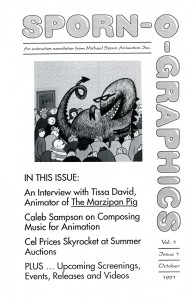 – In 1991, I’d started a small xeroxed publication that I sent out to about a thousand people on my mailing list. Basically, we were promoting ourselves by giving brief interviews and articles about the people in animation who had touched our films in some way.
– In 1991, I’d started a small xeroxed publication that I sent out to about a thousand people on my mailing list. Basically, we were promoting ourselves by giving brief interviews and articles about the people in animation who had touched our films in some way.
This first issue had as its focus the two half-hour films we’d done on poetry – Nonesense & Lullabyes: Nursery Rhymes and Nonesense & Lullabyes: Poems. These were two delightful films to work on, and I wanted to give them a bit of attention even though they were designed only for Home Video consumption. (We’re still trying to get back the rights from the now-defunct Live Entertainment to have them rereleased in dvd.)
The issue included a short interview with Tissa David who responded to questions by Esther McGowan, who edited the publication at the time. A non-animator asking curious questions.
(Click on any image to enlarge.)
The late Caleb Sampson wrote a short piece about writing film music for animation. Caleb did music for about 20 of my films.
Greg Perler gives a brief response to the differences of working at Disney’s studio as opposed to MSA. He had just moved to work on Beauty and the Beast as an Assistant Editor. (Greg recently is editing Disney’s Enchanted, due out later this year.)
The Tissa David interview:
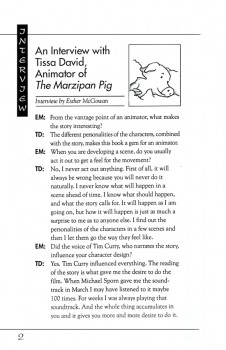 pg 2
pg 2 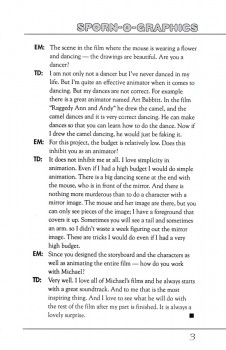 pg 3
pg 3
The Caleb Sampson article on music:
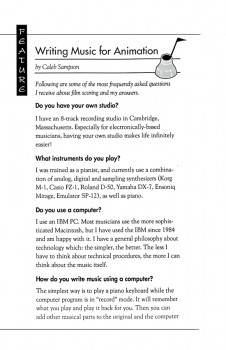 pg 4
pg 4 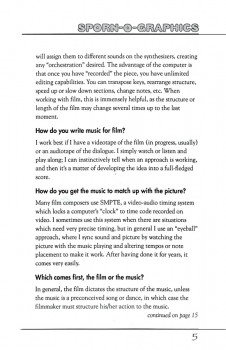 pg 5
pg 5
Stephen MacQuignon on Color Styling:
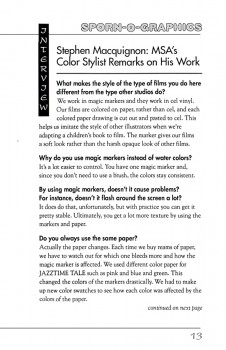 pg 13
pg 13 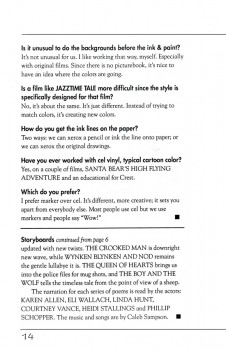 pg 14
pg 14
Greg Perler on editing here & there:
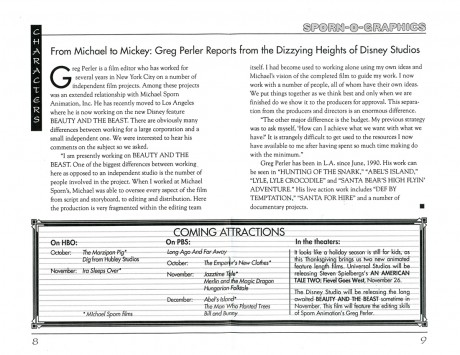 pgs 8 & 9
pgs 8 & 9
.
This issue was mailed with a cel from the half-hour shows, Nonesense & Lullabyes, and the response was a negative. Though there was no charge for the publication OR the cel, yet I received a letter back saying that the cels weren’t done with cel-vinyl, so they weren’t valuable! Oh, well. Sorry! I didn’t do that again.
Issue #4 previously appeared on this “Splog,” read it here if you’re interested.
